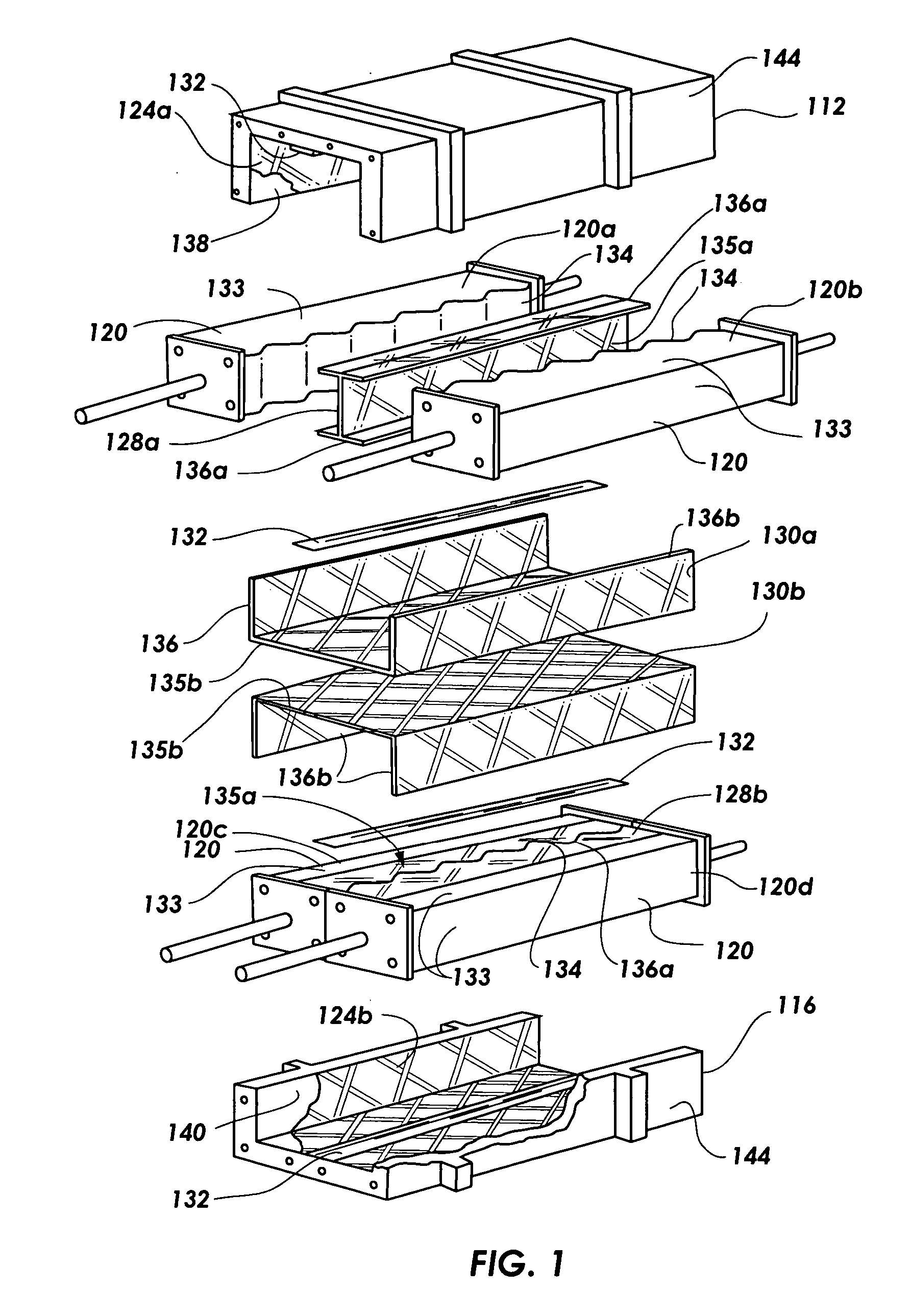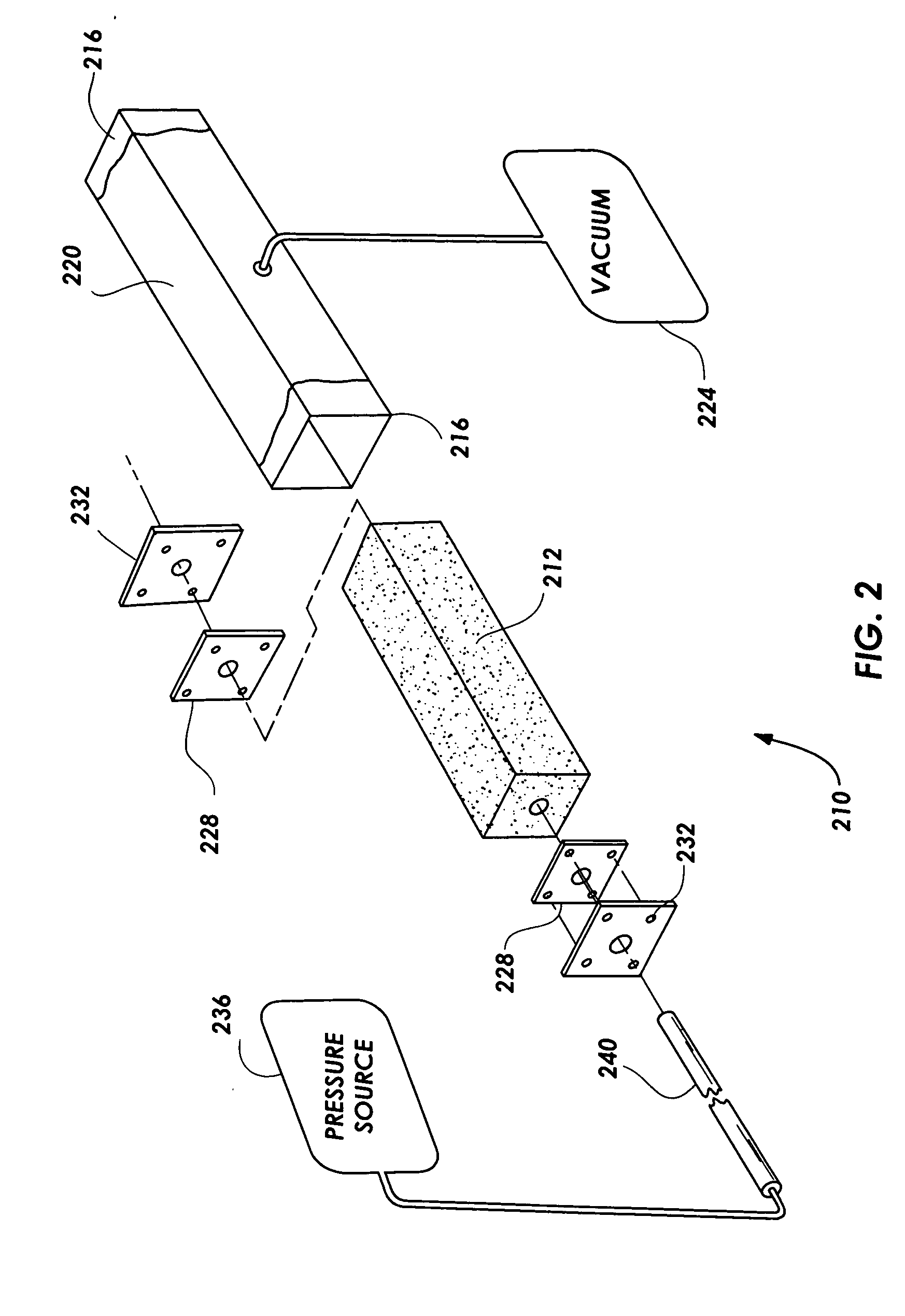Method of assembling a single piece co-cured structure
a composite structure and co-curing technology, applied in the field of composite materials for advanced materials, can solve the problems of high cost of composite materials, composite materials are several times more expensive than metals or fiberglass, and the price of composite materials can be often prohibitive, and achieve the effect of low cos
- Summary
- Abstract
- Description
- Claims
- Application Information
AI Technical Summary
Benefits of technology
Problems solved by technology
Method used
Image
Examples
Embodiment Construction
summarized above will be rendered by reference to the appended drawings. Understanding that these drawings only provide selected embodiments of the invention and are not therefore to be considered limiting in scope, the invention will be described and explained with additional specificity and detail through the use of the accompanying drawings in which:
[0023]FIG. 1 is an exploded assembly view of a composite structure being assembled according to the disclosed process.
[0024]FIG. 2 is an exploded assembly view of a pressurizable form.
[0025]FIG. 3 is an exploded assembly view of an assembly process for defining an interior surface of a composite structure.
[0026]FIG. 4 is an exploded assembly view of a process for adhering a composite material to a shaping surface.
[0027]FIG. 5 is a cross-sectional view of a single piece co-cured fuselage.
[0028]FIG. 6 is an exploded assembly view of the component employed in forming a single piece co-cured fuselage.
[0029]FIG. 7 is a perspective vi...
PUM
| Property | Measurement | Unit |
|---|---|---|
| pressure | aaaaa | aaaaa |
| pressure | aaaaa | aaaaa |
| pressures | aaaaa | aaaaa |
Abstract
Description
Claims
Application Information
 Login to View More
Login to View More - R&D
- Intellectual Property
- Life Sciences
- Materials
- Tech Scout
- Unparalleled Data Quality
- Higher Quality Content
- 60% Fewer Hallucinations
Browse by: Latest US Patents, China's latest patents, Technical Efficacy Thesaurus, Application Domain, Technology Topic, Popular Technical Reports.
© 2025 PatSnap. All rights reserved.Legal|Privacy policy|Modern Slavery Act Transparency Statement|Sitemap|About US| Contact US: help@patsnap.com



